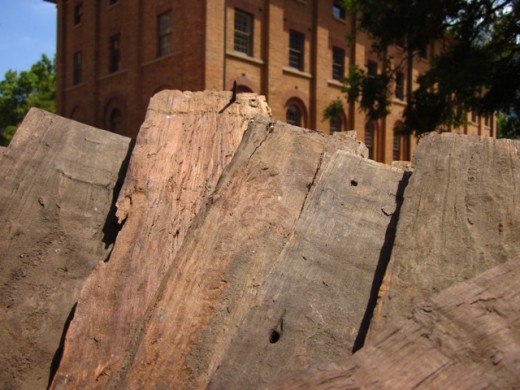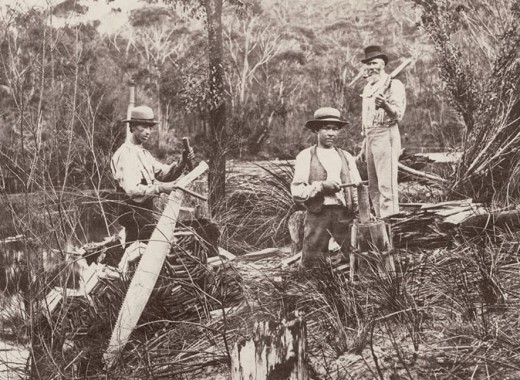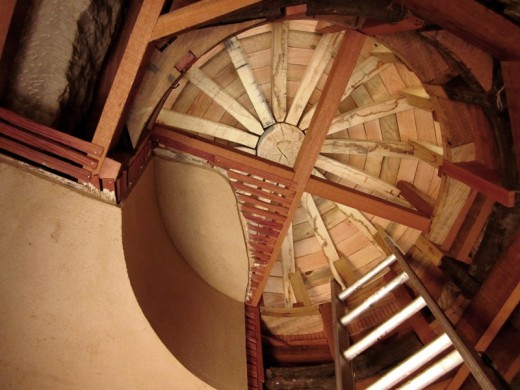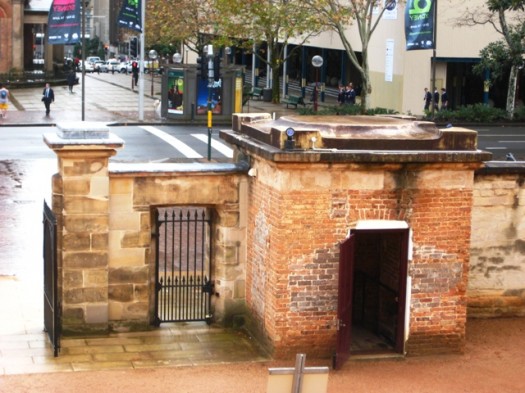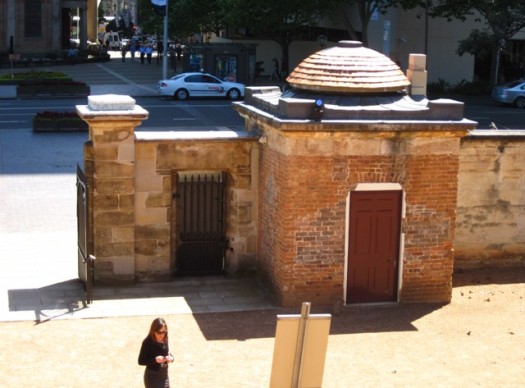We had a great day on Domes Day, Sunday 13 November. Beautiful weather, fun people…and our two famous domes! We completed our public art sculpture, a cardboard replica of a dome, covered in shingles decorated by people of all ages, we had a grand unveiling of the domes, people talked to us about domes and shinges, there were tours, people could find out all about the shingles themselves – it was a great day. Check out our video of the day:
The Unveiling of the Domes on Domes Day! from Historic Houses Trust on Vimeo.
One of the interesting things for us in working on this project has been unpacking the many contradictions we find in history, conservation and the contrasting approaches to both concepts. Macquarie died in disgrace, discredited by Bigge. Now we enjoy his and Greenway’s extraordinary vision when we encounter the fruits of that partnership across Sydney. These are places that we walk past on our way to work, or visit with friends. We hold our festivals, parties and celebrations in these places. Many people we spoke to about architecture in the course of this project agreed that we need to preserve history, and that our ‘old buildings’ are an important part of that story. But very few people, if any, knew that the Hyde Park Barracks is a Unesco World Heritage site, as one of the most important convict sites in the world. The completion of the domes marks the final part of the restoration of the Hyde Park Barracks, so it really has been something worth talking about.
Since everyone we spoke to seemed to agree that places like the Barracks are important, and that we should value the contribution of people like Macquarie in shaping a vision for modern Australia as well as his contribution to the Sydney skyline, why don’t we continue the domes celebration? I have a simple suggestion, based on what we’ve been doing these last 10 weeks. Tell someone else about it. Make it important and make Macquarie’s vision live on – by sharing it.

